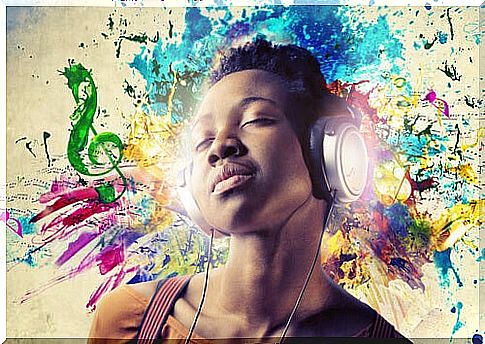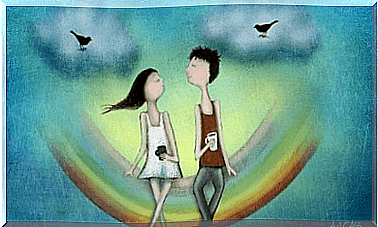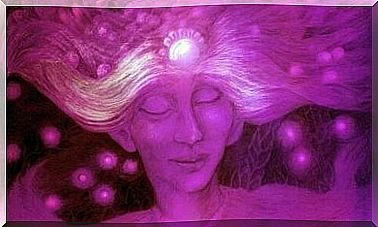Synesthesia: I Hear Colors And See Sounds

Synesthesia is a phenomenon in which experiencing a visual, physical touch, or auditory stimulus produces a perceptual sensation. One of the most common forms of sensory mixing is to associate numbers, days of the week, or months with a particular color. A person perceives them as colors that are always the same for a particular number or day.
Not many people experience this, but it is more common than we think. In fact, there are many people who don’t know that their way of perceiving a particular type of stimulus is different than others until they talk to someone and find that it’s not “normal”.
This phenomenon is not perceived as unpleasant. People who experience synesthesia cannot even imagine the world without experiencing it the way they experience it. To them, it would seem sad. So we are not talking about anomaly, but rather about a richer way of experiencing the world.
Different forms of synesthesia
There are many different forms of synesthesia. For example, there are people who see colors when listening to music, even if it is not a hallucination. It’s not that they see colors and imagine they’re part of reality, but instead when they listen to music, a stream of colors floods through them; each color is associated with a specific note.

Scientist Jamie Ward says synestheticians experience the world in an unusual way and have a special feeling that surrounds them. Words can evoke flavors, each number a certain color, pain can also be associated with taste or color, different surfaces feel to evoke emotions… Therefore, there are different ways to experience it.
Synesthesia and art
Experiencing the environment in such a rich way can encourage creativity. This may be useful for those who choose to dedicate themselves to art, as they can use their work to express how the world looks to them.
New York artist Carol Steen uses this space to inspire her own creations. This woman says she can notice the color, taste and smell of the paint. As a form of inspiration, he uses acupuncture to awaken these sensations and turn them into his own art.

There is evidence of famous synestheticians, such as the author Vladimir Nabokov, who claimed that for him the letter combination “NZSPYGV” formed a rainbow. The physicist and Nobel Prize winner Richard Feynman and the philosopher Ludwig Wittgenstein are also famous examples.
Is it hereditary?
Today, we know that synesthesia has biological and genetic components, although the genes involved have not yet been precisely identified. Parents and children may inherit synesthesia, but emotions do not have to be the same. You can inherit the space, but not the way you experience it.
It has been found among the twins that their experiences are not the same and that one may be a synesthetist and the other may not. And it may even be that parents don’t experience it, even if they carry the gene and their children reveal it.

Synesthetic children usually perceive their condition in adolescence: when they talk about a voice or a number, they find that not all of us see it the same way they do. According to Ward, the child described the sound in color, saying that the frog’s roar was usually brown, but today it sounded blue, suggesting that the sound was sharper that day.
Synesthesia in the brain
There is an area in our brain that is responsible for detecting colors: V4. In an experiment involving 12 people, Julia Nunn found that this part of the cortex was activated when synesthetic subjects listened to speech with their eyes closed, indicating that the detection of a stimulus (sound) automatically produced another (color).
In addition, the description of one sensation through another is almost immediate and is always experienced in the same way. Others see it on paper from which they read a number or word, even though they are aware that the paper is blank. Others say that they kind of see it on the “internal screen” or that they see it kind of floating.
To summarize briefly, we can state that synesthesia is:
- Stable; detecting the same sensations for each stimulus (e.g., always the same color for a particular number, it does not change).
- It can be inherited.
- Exact; it always occurs with the same stimulus.
- It happens fast. As soon as you read the word, after listening to the song, touching the surface or seeing the number, the accompanying feeling automatically appears.
Another form of synesthesia
This phenomenon manifests itself in humans, who perceive the environment in a special way from birth and probably as an inheritance to which genes are associated. But that’s not the only way to experience it. You can also experience a similar experience using LSD.
It can be experienced even after blindness. People who are blind can experience visual images mentally. In this way, synesthesia is a phenomenon that continues to arouse the curiosity of many scientists and raises many questions about the way we experience the world.









